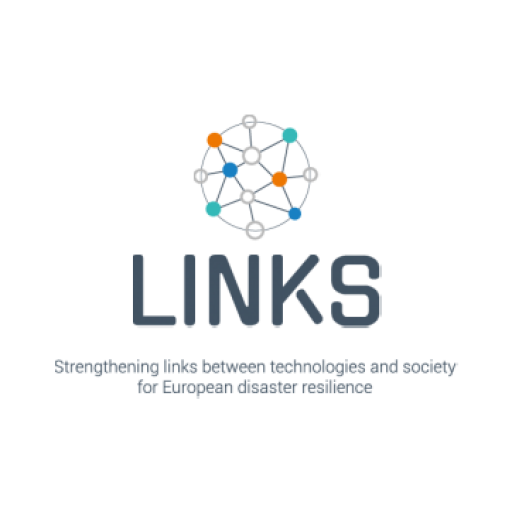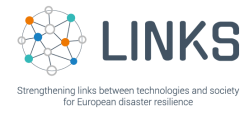
All good things must come to end, and so it is with the LINKS project which wraps up in November 2023. After three and a half years of committed work by the LINKS partners, we are excited and eager to share our final results with the world.
LINKS can be proud of its accomplishments. The project set out with the ambition to study and consolidate knowledge on the uses of Social Media and Crowdsourcing (SMCS) for increasing disaster resilience. However right from the start, the project was faced with the unanticipated challenges brought on by a global pandemic. From behind screens, in home offices, partners across Europe (and even Japan) which had never met, logged into TEAMS day-after-day and worked tirelessly to align ideas, expectations, and conduct research and activities together for the project. True to its name, LINKS quickly became a project about connecting stakeholders working in Disaster Risk Management (DRM) through innovative means of communication, coordination, and cooperation.
The first in-person consortium meeting was held in the second year of the project in Split Croatia. By this time LINKS was well underway. The research in the project cases was being contextualized and grounded based on the needs of local partners and stakeholders, and the results began to paint a broader picture of the ongoing interest and needs by disaster management organizations across Europe. On the one hand, there was great interest in organizations to work with SMCS in DRM, but on the other, a lack of good and best practices, formal procedures and guidelines, overviews of technologies and solutions, and understanding on how to best engage citizens.
In the last half of the project, LINKS has worked to fill these gaps through the development of seven tailored products within a LINKS Framework. The Framework is made accessible through our LINKS Community Center (LCC), an online platform which functions as a one-stop-shop for materials, resources and guidelines for using SMCS in disasters. Further on in this newsletter you will read about the latest features and use potentials for the LCC and each of the products in the Framework, which include interactive libraries on SMCS technologies, guidelines, crisis communication messages, and use cases, as well as e-learning modules and other educational resources linked to our ‘Including Citizens Handbook’ and ‘Feel Safe platform’.
None of the outcomes in the project would have been possible without the expertise and efforts from our partners and LINKS Advisory Board members, and in particular the experiences gained from working with the case teams working in Italy, Denmark, Germany, and the Netherlands. Those ongoing efforts have helped build the foundations for our LINKS Community, which is now growing outside the boundaries of the project. Indeed, our engagement with the EU Commission and the Community for European Research and Innovation for Security (CERIS), the Crisis Management Innovation Network Europe (CMINE) on fostering innovation in Crisis Management, and the sister projects in the Societal Resilience Cluster (SRC) has led to various shared events and initiatives, including an upcoming joined policy brief and even a spin-off Horizon project SYNERGIES (kicking off December 2023!) with some members from the SRC.
So, while the LINKS project is entering its final month, the LINKS Community is just getting started. Having laid the groundwork, LINKS now tasks you with helping to maintain our ongoing ambitions to gather, consolidate, and share knowledge on the roles which SMCS can play in strengthening disaster resilience. We encourage you to join us by using and contributing to our products on the LINKS Community Center, and sharing your knowledge and expertise to further expand the LINKS legacy.

